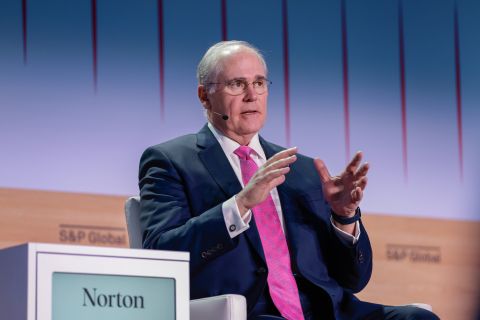Climate change may spur as much hyperbole as any political issue right now. One side argues that carbon-based fuels must be done away with or Earth will turn into a sweaty hothouse with boiling seas and dusty deserts. The other side laughs off the issue as Chicken Little, the-sky-is-falling twaddle, arguing the planet’s climate has swung widely on its own, thank you.
This is a business publication. Perhaps we should consider this issue from a cold (pardon the expression), dollars-and-sense perspective. The fact is that renewable energy sources are expensive, inefficient and likely to stay that way.
Robert Bryce, senior fellow at The Manhattan Institute for Policy Research, recently published a report that outlines the major energy advantages the U.S. enjoys. His study reviews Europe’s “extensive mandates, market interventions (including a ‘cap and trade’ regime to reduce emissions) and subsidies aimed at promoting renewable energy.” It compares those policies with the generally free-market approach on this side of the Atlantic.
Consider the cost of electricity.
“Electricity prices in Europe now are far higher than those in the U.S., for both residential and industrial consumers,” Bryce says. “Between 2005 and late 2013, the average price of residential electricity in the EU rose by 55%, and industrial electric rates jumped by 26%. The average U.S. household now pays 12 cents per kilowatt-hour—about a third of what the same amount of electricity costs in Germany. European steelmakers now pay twice as much for their electricity as do U.S. manufacturers.”
Europe’s businesses can’t compete. He notes late last year that German-based BASF estimated it could save nearly $700 million per year in energy costs if it were to relocate all its plants to the U.S.
“That clearly will not be happening but is indicative of the energy-cost advantage that the U.S. now enjoys,” Bryce observes. “And that advantage does have practical consequences. BASF, the world’s biggest chemical maker by sales, has doubled the amount of capital that it invests in the U.S. In 2010, the company was investing about $500 million per year in the U.S. By 2013, that figure had jumped to $1 billion per year, and BASF expects to continue its annual investments at that level through 2017.”
Sure renewables are pricey, climate change supporters say, but all that wind and solar power clears the skies of dangerous carbon dioxide, so it’s worth the expense, right?
No.
“Thanks to the shale revolution, the U.S. is also reducing emissions faster, at far lower cost, than the EU,” Bryce wrote in a related opinion piece for The Wall Street Journal. “Between 2005 and 2012, U.S. carbon dioxide emissions fell by 10.9%, according to the widely cited ‘BP Statistical Review of World Energy 2013.’ During the same period, the EU’s emissions fell by 9.9%, according to the Netherlands Environmental Assessment Agency.”
Our John Harpole pointed out this fact recently in one of his “Closing Bell” columns, pointing out the U.S. is the only nation to meet its emissions mandate under the Kyoto Protocol, which ironically it did not sign. He added that the U.S. Energy Information Administration recently found that U.S. CO2 emissions have decreased to 1992 levels.
The development of abundant and comparatively cheap natural gas in North America is making a difference that stimulates the economy as it reduces emissions. ?
Paul Hart can be reached at pdhart@hartenergy.com or 713-260-6427.
Recommended Reading
Is Double Eagle IV the Most Coveted PE-backed Permian E&P Left?
2024-04-22 - Double Eagle IV is quietly adding leases and drilling new oil wells in core parts of the Midland Basin. After a historic run of corporate consolidation, is it the most attractive private equity-backed E&P still standing in the Permian Basin?
ONEOK CEO: ‘Huge Competitive Advantage’ to Upping Permian NGL Capacity
2024-03-27 - ONEOK is getting deeper into refined products and adding new crude pipelines through an $18.8 billion acquisition of Magellan Midstream. But the Tulsa company aims to capitalize on NGL output growth with expansion projects in the Permian and Rockies.
EnQuest Selling Stake in North Sea Golden Eagle Oilfield, Sources Say
2024-04-16 - EnQuest has struggled in recent years with high debt levels and a drop in profits after Britain imposed a 35% windfall tax on North Sea producers.
Marketed: Paloma Natural Gas Eagle Ford Shale Opportunity in Frio County, Texas
2024-02-16 - Paloma Natural Gas has retained EnergyNet for the sale of a Eagle Ford/ Buda opportunity in Frio County, Texas.
GeoPark to Acquire Interests in Vaca Muerta
2024-04-11 - GeoPark Ltd. entered into a binding offer to acquire a non-operated working interest in Argentina’s Neuquen Basin’s Vaca Muerta Formation as it extends its reach across Latin America.



